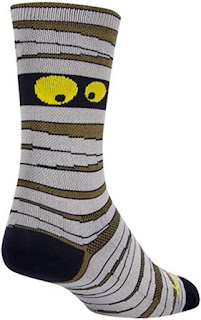Cyclist's Choice of Socks: What's the Difference?
Cyclist's Choice of Socks: What's the Difference?
Ankle socks are the shortest type of cycling socks and are popular for road cycling and mountain biking. They are typically made from synthetic materials that wick away moisture and keep your feet cool and dry.
Crew socks are slightly taller than ankle socks and come up to the mid-calf. They are a good all-around choice for cycling and can be worn for both road and mountain biking. Crew socks can also help to protect your legs from scratches and scrapes.
Knee socks are the tallest type of cycling socks and come up to the back of the knee. They are popular for mountain biking and other off-road cycling disciplines. Knee socks can help to protect your legs from mud, thorns, and other debris. They can also help to keep your legs warm in cold weather.
Other styles of cycling socks include:
Over-the-calf socks are taller than crew socks and come up to the bottom of the kneecap. They are a good choice for cyclists who want extra protection for their legs.
Compression socks are designed to apply pressure to the legs, which can help to improve circulation and reduce muscle fatigue. They are popular for long-distance cycling and recovery rides.
Merino wool socks are a natural fiber that is known for its moisture-wicking and temperature-regulating properties. Merino wool socks are a good choice for cyclists who ride in a variety of weather conditions.
How to choose the right cycling socks
When choosing cycling socks, there are a few things to keep in mind:
Material: Cycling socks are typically made from synthetic materials such as polyester, nylon, and elastane. These materials are moisture-wicking and durable, making them ideal for cycling.
Fit: Cycling socks should fit snugly but not too tightly. They should also be long enough to come up over the top of your cycling shoes.
Padding: Some cycling socks come with padding in the heel and toe. This padding can help to reduce friction and prevent blisters.
Style: Cycling socks come in a variety of styles, so you can choose a pair that matches your personal taste.
Conclusion
The best type of cycling socks for you will depend on your personal preferences and the type of cycling you do. If you are unsure of which type of socks to choose, ask a cycling expert for recommendations.



Comments
Post a Comment